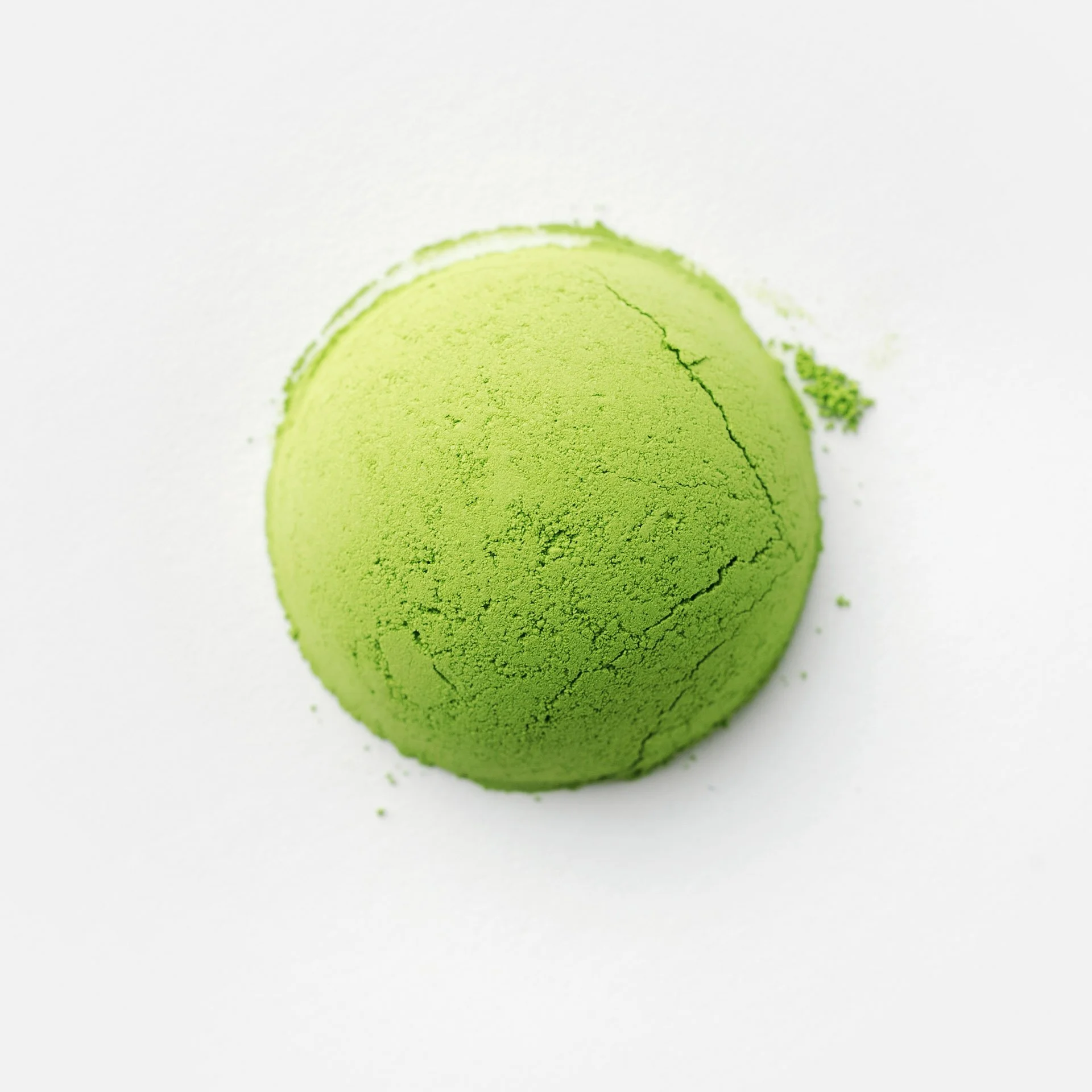MMC 01/23: Tsuji’s Asahi (朝日) Shirakawa Uji Matcha
Matcha Mill Club is our monthly Matcha membership, where we stone-mill a new single-cultivar Matcha and ship it out within 24 hours of milling every month. This article details the Matcha we shipped for January 2023!
Dear reader,
Before we go into this month’s Matcha Mill Club, I wanted to give my sincere thank you for your support over the past year. Ooika was a small experiment of a radical concept: milling Matcha fresh in the United States using authentically imported Ishi Usu stone mills.
Over the past year, much has changed with Ooika. Two exciting things come to mind: Firstly, the impending opening of our first physical location in Lawrenceville, New Jersey. Secondly, the refining of what Ooika is. Let me explain the latter.
At the start, Ooika was just about milling Matcha fresh. What was missing was the “why.” Since then, I have spent months in Japan, meeting more farmers. The Japanese tea industry has many challenges and is in a yearly decline.
Abandoned tea fields are everywhere. Farmers do not have replacements as their children are moving into the cities. Worst yet, the domestic tea industry can not support itself and is in economic decline.
Here is the tragedy: the less economically effective production methods are the methods that are the most in danger. We’re talking about hand-picking, known as tezumi. Or Honzusabai shading (where the tea plant is covered with traditional reed and bamboo.)
It dawned on me that Ooika’s mission is to preserve the most conservative Japanese matcha cultivation methods. We can help introduce more Americans to exquisite Matcha, and help retain a 1,000-year romance between man and nature in Japanese tea.
This is no easy task. Stone milling Matcha in the United States is difficult. Hand-picking tea is tiring. Using reeds to shade over plastic is overwhelming in many regards. But in doing so, we can help preserve an art so unique, and so valuable.
Matcha of this caliber of distinction has unique aromas, flavors, textures, and after-tastes that can not be replicated using modern, mass-produced techniques.
Ooika will continue to work with small, independent farmers and source the rarest and most conservative Tencha across Japan—all of which we will mill fresh, in-house, for you.
Through my time in Japan, I’ve acquired new relationships with highly prized farmers in many new terroirs, including multiple first-place winners in the Japanese Annual Tea Competition (回全国茶品評会.)
This is one of the most legendary and competitive distinctions, not just in tea, but in any competition in the country of Japan as a whole. Super-bowl level.
Ooika is humbled and honored to stone-mill this Matcha for you in the upcoming year of 2023. Thank you for everything. Anyhow, let’s get into this month's Matcha.
Ochairinikki (御茶入日記)
Welcome to December 2022’s Ochairinikki (御茶入日記)—renamed from “Miller’s notes.” In the world of Matcha, there is a yearly celebration known as Kuchikiri no Chaji (口切りの茶事) where the new year’s Matcha is taken from storage after a 6-month aging process.
The aging Matcha is stored inside of jars known as Chatsubo (茶壷.) The seal is broken, and as the guests experience the Matcha, the host of the ceremony reads the Ochairinikki (御茶入日記), or tea diary, sharing the details of the tea, such as origin, cultivar, name, and other details.
We couldn’t think of a more fitting name for the monthly Matcha Mill Club information newsletter.
Asahi Cultivar (朝日), the Pinnacle of Uji
For me, Asahi (朝日) represents the pinnacle of Matcha from Uji, Kyoto. Its color is vibrant, with a rich forward taste that leaves a wonderful lingering aftertaste.
When it comes to Matcha, blending is much more common than a single cultivar—for a few reasons, one of which is simple that certain cultivars simply can’t “do it all.” And for this month, Ooika is presenting a wonderful Tsuji's Asahi (朝日) Shirakawa Uji Matcha.
Blending
Yabukita, for example, has richness and umami notes, but it can be a bit harsh on the tongue. The color of Yabukita is also somewhat yellow in appearance.
Samidori will often be blended into Yabukita to “round out” and soften the harsh notes of the Yabukita, persevering the savory notes that Yabikuta holds over Samidori.
Okumidori is blended in for color purposes.
Standing Alone
Asahi (朝日), which translates to the morning sun, stands alone in that it can bring a complexity of flavor, depth, and color without blending being absolutely necessary. In that way, it’s a very impressive cultivar.
The Price of Asahi (朝日)
Still, there are some shortcomings of the Asahi (朝日) cultivar—which really just boils down to economics.
Asahi itself has a fairly shallow root structure, thus as a plant, it’s delicate, and requires more attention and care. Its yield is less than other cultivars in Uji, so farmers get less tea material per the same amount of space.
All of this means that the Asahi cultivar is more expensive than alternatives, but the farmers do not necessarily make more money. One farmer told me that, in regards to Japanese tea, it’s high risk, low reward.
High Risk, Low Reward
“Japanese tea is high risk, low reward.” Here’s how it was described to me by the farmer (who was a 1st-place national tea competition winner):
When it comes to houses, it’s all about the neighborhood. The value of your house is more or less set by the other houses in the area. If your house is worth $300,000, adding an addition to the home that cost you $300,000 doesn’t make your home worth $600,000.
Japanese tea, it’s similar to this. Putting significantly more effort into your tea with traditional, labor-intensive, and expensive techniques does not mean you can sell your tea for significantly more.
In general, producers are financially rewarded for cutting as many corners as possible.
Regarding Asahi (朝日)
Here’s how this relates to Asahi (朝日): the producers, like Tsuji-san of Tsujiki, who spend the effort, time, and energy to produce 100% handpicked Asahi (朝日) are doing it out of passion, and love, for Matcha and the craft of Japanese tea. Please remember this when you taste the tea!
Tsujiki in Uji Kyoto
In future Matcha Mill Clubs, we’ll cover Tsuji-san and his Tsujiki tea farm in more detail. I’ll give a few highlights:
Tsuji-san is a 5th generation tea farmer in Shirakawa, Uji (one of the most highly desired terroirs for Matcha in the world) and won the highly-coveted 56th Prime Minister Award via the Agriculture, Forestry, and Fisheries Festival.
Experience a Bowl of Asahi (朝日) Matcha
Please enjoy this distinguished Matcha from one of Japanese most legendary Japanese tea producers.
And as always, thank you so much for your support as a member of the Matcha Mill Club. Please consider posting your experience, reviews, and photos on social media, and tag us @ooika.co!
Sincerely,
Marc
Ooika’s Miller
Ochairinikki (御茶入日記)
Category Green tea (お茶) |
Subcategory Kabusecha (かぶせ茶) |
Grade Indigo (Beyond Ceremonial) |
Terroir Shirakawa, Uji, Kyoto, Japan |
Vintage 2021 |
Cultivar Asahi (朝日) |
Harvest Method 100% handpicked (手摘み, Tezumi) |
Shading Style Kaireisha (Double-net cold gauze type, 95% light-blocked) |
Shading Duration 58 days |
Milling Ishi-Usu (石臼) Stone-Milled by Ooika |
Packaging Cold-stored, oxygen-free bag |
Use Usucha, Koicha |
Category: Green tea.
Subcategory: Kabusecha (かぶせ茶.)
Matcha Grade: Indigo (beyond Ceremonial grade.)
Terroir: Shirakawa, Uji, Kyoto, Japan.
Cultivar: Asahi (朝日)
Picking Method: 100% handpicked (手摘み, Tezumi.)
Vintage: 2021.
Shading Style: Kaireisha (Double-net cold gauze type - 95% light-blocked, 10% higher than the industry average.)
Shading Duration: 58 days.
Milling: Traditional Ishi-Usu Stone milled, in Lawrenceville NJ by Ooika.
Packaging: Cold stored, oxygen-free bag for optimal freshness.


